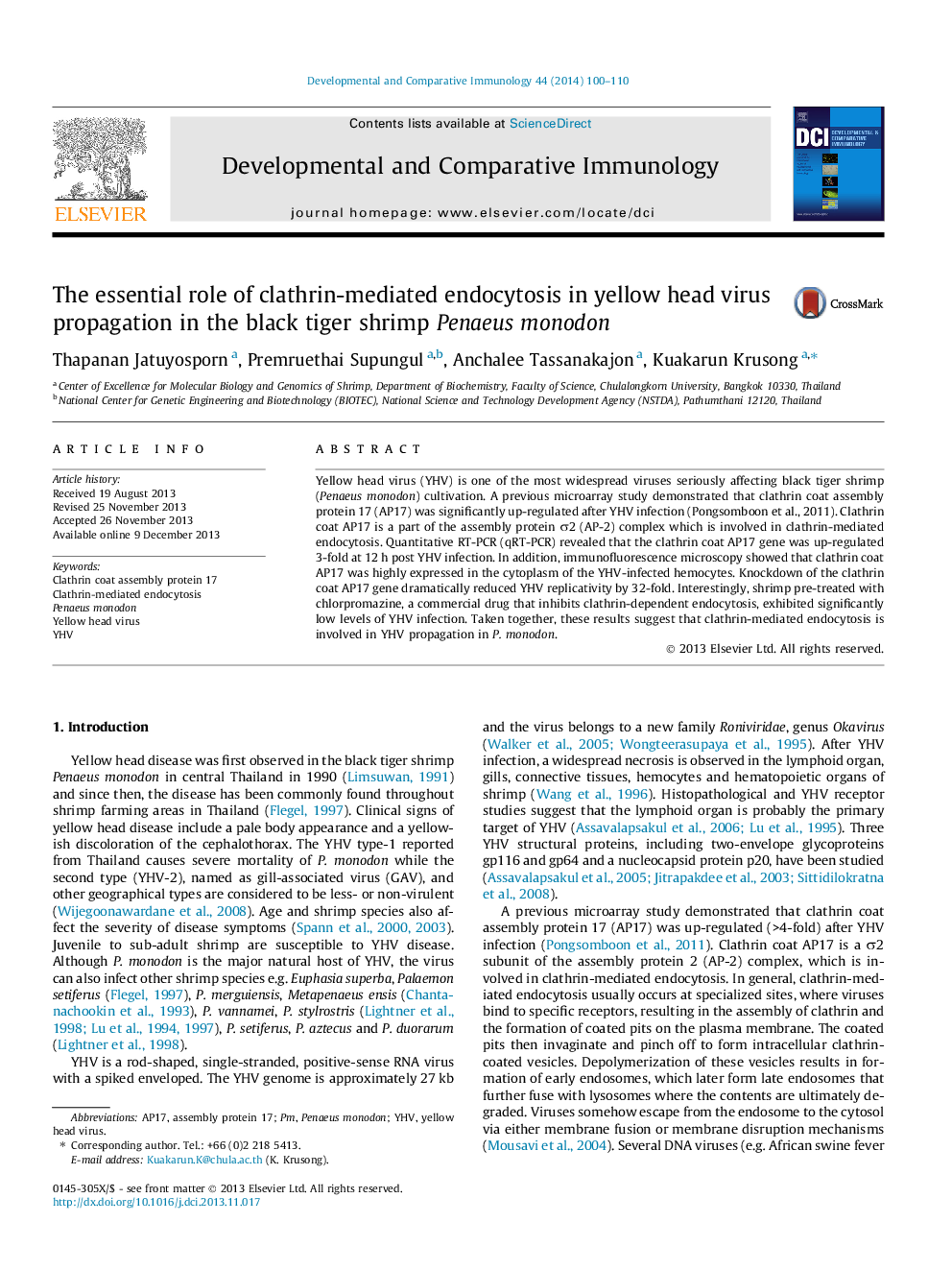| Article ID | Journal | Published Year | Pages | File Type |
|---|---|---|---|---|
| 2429253 | Developmental & Comparative Immunology | 2014 | 11 Pages |
•Clathrin coat AP17 gene was up-regulated 3-fold at 12 h post YHV infection.•Clathrin coat AP17 was also up-regulated at protein level upon YHV infection.•Knockdown of clathrin coat AP17 gene reduced YHV replicativity by 32-fold.•Chlorpromazine treated shrimp exhibited significantly low levels of YHV infection.•We propose YHV is internalized into host cells via clathrin-mediated endocytosis.
Yellow head virus (YHV) is one of the most widespread viruses seriously affecting black tiger shrimp (Penaeus monodon) cultivation. A previous microarray study demonstrated that clathrin coat assembly protein 17 (AP17) was significantly up-regulated after YHV infection (Pongsomboon et al., 2011). Clathrin coat AP17 is a part of the assembly protein σ2 (AP-2) complex which is involved in clathrin-mediated endocytosis. Quantitative RT-PCR (qRT-PCR) revealed that the clathrin coat AP17 gene was up-regulated 3-fold at 12 h post YHV infection. In addition, immunofluorescence microscopy showed that clathrin coat AP17 was highly expressed in the cytoplasm of the YHV-infected hemocytes. Knockdown of the clathrin coat AP17 gene dramatically reduced YHV replicativity by 32-fold. Interestingly, shrimp pre-treated with chlorpromazine, a commercial drug that inhibits clathrin-dependent endocytosis, exhibited significantly low levels of YHV infection. Taken together, these results suggest that clathrin-mediated endocytosis is involved in YHV propagation in P. monodon.
